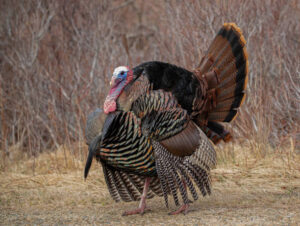Editorial
The Great Turkey Hunt

September is pretty much behind us, with its very warm and, at other times, quite chilly days and nights, and some torrential rains. It’s been like most of the Septembers around here, only the temperature fluctuations this year have been more drastic, and the thunderstorms have been more ferocious, felling trees and scattering branches and scaring children and dogs.
And now, as we run smack into the pumpkins and foliage and the eventual Jack Frost of October, we barrel right into the beginning of the great season of The Hunt. On the very first day of the coming month the seasons for coyote (until March 26), ruffed grouse (until February 28), pheasant (until February 28), bear (until December 20) and deer (until January 1), among others, open. All but deer may be shot with guns, but for the deer it’s a bit more complicated. The bow season runs from October 1 – November 18, the crossbow from November 5 – 18, the muzzleloader from December 12 – 20 and December 26 – January 1, the shotgun from November 19 – December 11, and the late bowhunting alongside the muzzleloaders from December 12 – 20 and December 26 – January 1. There are kids’ weekends, too.
The Great Turkey Hunt runs from October 15 – 28, from sunrise to sunset. This hunt is a beautiful dance, and very often the sharp-sighted turkey wins. That’s sad, because if one has ever indulged in a wild turkey, one will have trouble with Butterballs from then on.
Native to North America, the wild turkey probably got its name from the domesticated variety that was imported to Britain from the Levant, which the British associated with Turkey and which they remembered when they landed in the New World at Plymouth and Jamestown and discovered a great many of them running around. These North American birds are Eastern wild turkeys, and their range in the 18th and 19th centuries was from Maine to Florida and west to Minnesota, Illinois, and Missouri. They then numbered around five million, but they were hunted out in the early 20th century and they almost disappeared, only to be brought back by intense trap-and-transfer programs throughout the U.S. and Canada. By 1973 the U.S. turkey population had again risen, to over a million. The Great Turkey Hunt resumed.
The turkey is an agile, fast flier that most often flies close to the ground for no farther than a quarter mile. Its gobble, however, will carry four times that distance. Turkeys are omnivorous; they prefer acorns and nuts but will make do with seeds, berries, juniper, leaves, fern fronds, roots and insects, reptiles and grass. They often forage alongside deer and squirrels, each watching for common predators with its particular forte — the deer’s keen ears; the turkey’s mighty eyes and the squirrel’s lofty watch from above.
In fact, Benjamin Franklin wanted Tom to be the “Representative of our Country… For in Truth the Turkey is in Comparison [to the Bald Eagle] a much more respectable Bird, and withal a true original Native of America… He is besides, though a little vain & silly, a Bird of Courage, and would not hesitate to attack a Grenadier of the British Guards who should presume to invade his Farm Yard with a red Coat on,” he wrote in January, 1794.
The lofty eagle ended up on the national crest while the lowly turkey ended up on the dinner table.

